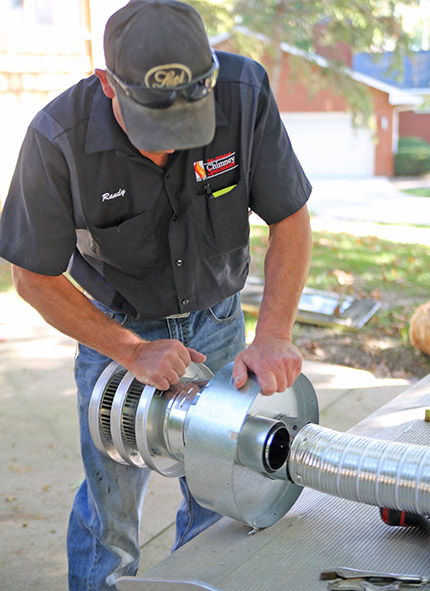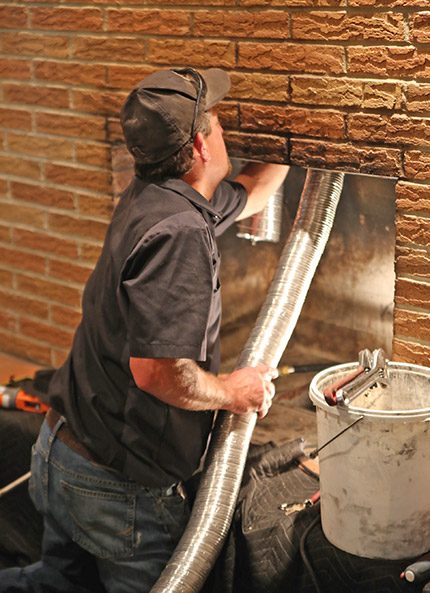The Skinny on Chimney Liners
 If you’ve been lighting your fireplace year after year without taking a closer look inside your chimney, then you may not be aware of a potentially hidden danger lurking inside. When a fireplace burns, it produces dangerous byproducts including toxic gases, creosote and smoke that can damage the flue.
If you’ve been lighting your fireplace year after year without taking a closer look inside your chimney, then you may not be aware of a potentially hidden danger lurking inside. When a fireplace burns, it produces dangerous byproducts including toxic gases, creosote and smoke that can damage the flue.
Without a chimney liner to protect the inside walls of the chimney these byproducts can degrade the masonry and mortar allowing toxic gases including deadly carbon monoxide into your home. Also, cracks in the flue can also allow excess heat to escape through the interior walls and spark a fire. A chimney liner is one of the best ways to protect your home and family.
What Is a Chimney Liner?
A chimney liner is a cement, clay or metal material that is inserted in the flue and forms a barrier to protect the home and chimney from the heat and contaminants of a gas or wood-burning fireplace. It also increases the effectiveness and efficiency of the chimney.
Why Your Chimney May Need a Liner
Many older homes like those built in the 1970’s and earlier were built without a chimney liner. Also, chimney liners can become cracked or damaged over time from water leaks, debris and excessive heat necessitating its repair or replacement.
A chimney liner is designed to serve three purposes. First, it protects your home by allowing the heat, smoke and contaminants produced in the fireplace to escape the chimney. Without a liner the high heat and gases from a wood-burning fireplace, which can be as high as 1100 degrees Fahrenheit, can transfer through the interior walls igniting any combustible materials like wood frames and beams that were used to build the home. Secondly, a liner protects the chimney masonry from water and other debris that could damage the bricks and mortar. This can significantly reduce both the structural stability and usable life of your chimney. And excessive deterioration of mortar joints can also allow smoke and harmful gases into your living space. Thirdly, a chimney liner increases the updraft by allowing air to be drawn into the chimney for optimal fire combustion.
Types Of Chimney Liners
There are three main types of chimney liners, clay, metal, and cast-in-place cement.
 Clay – Clay liners are the most commonly used. They are available in a variety of sizes to fit most round or square flues. They are inexpensive, easy to maintain, and provide good performance. But high heat causes clay to expand and contract which can cause cracking. And any cracks that form in the clay tiles will need to be repaired.
Clay – Clay liners are the most commonly used. They are available in a variety of sizes to fit most round or square flues. They are inexpensive, easy to maintain, and provide good performance. But high heat causes clay to expand and contract which can cause cracking. And any cracks that form in the clay tiles will need to be repaired.
Metal – Metal liners are available in stainless steel or aluminum and are extremely safe and durable. They are easy to maintain, improve energy efficiency and are easy to install. Steel liners are suitable for all types of fireplaces. Also, metal liners are usually fitted with insulation material for additional fire protection and safety.
Cast-in-place – A cast-in-place consists of a layer of a cement-like substance that is pumped into the flue leaving a fine, smooth finish when the liner dries. It provides excellent insulation for very high heat and is very durable. In many cases, cast-in-place liners don’t require the removal of an existing liner. It also improves the structural stability of older chimneys and is safe for use with all types of fuels.







